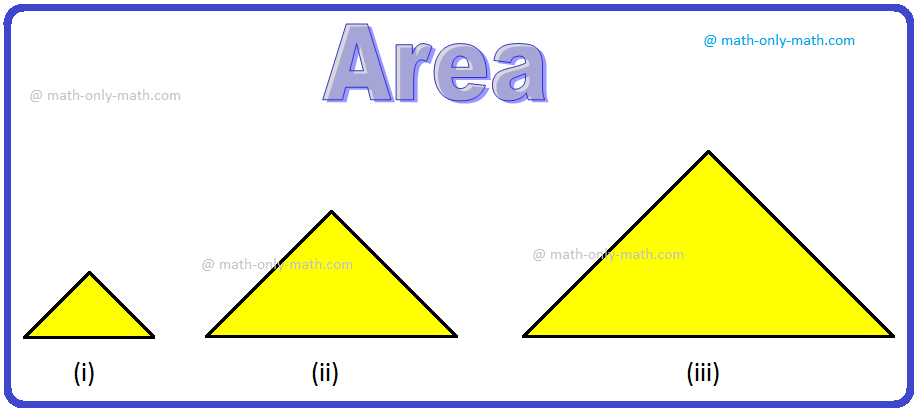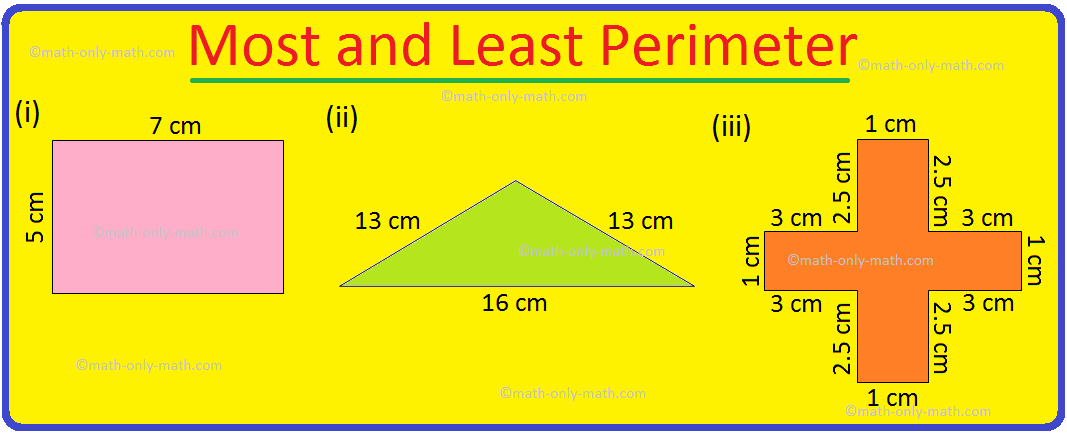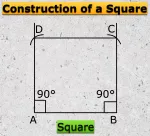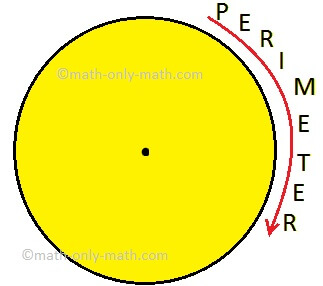Subscribe to our ▶️YouTube channel🔴 for the latest videos, updates, and tips.
Home | About Us | Contact Us | Privacy | Math Blog
Problems on Straight Lines
We will learn how to solve different types of problems on straight lines.
1. Find the angle which the straight line perpendicular to the straight line √3x + y = 1, makes with the positive direction of the x-axis.
Solution:
The given equation of the straight line √3x + y = 1
Covert the above equation into slope-intercept form we get,
y = - √3x + 1…………………… (i)
Let us assume that the given straight line (i) makes an angle θ with the positive direction of the x-axis.
Then, the slope of the straight line (i) will be tan θ
Hence, we must have,
tan = - √3 [Since, the slope of the straight line y = - √3x + 1 is - √3]
⇒ tan θ = - tan 60° = tan (180° - 60°) = tan 120°
⇒ tan θ = 120°
Since the straight line (i) makes an angle 120° with the positive direction of the x-axis, hence a straight line perpendicular to the line (i) will make an angle 120° - 90° = 30° with the positive direction of the x-axis.
2. Prove that P (4, 3), Q (6, 4), R (5, 6) and S (3, 5) are the angular points of a square.
Solution:
We have,
PQ = √(6−4)2+(4−3)2 = √5
QR = √(6−4)2+(5−4)2 = √5
RS = √(5−6)2+(3−5)2 = √5 and
SP = √(5−3)2+(3−4)2 = √5
Therefore, PQ = QR = RS = SP.
Now, m1 = Slope of PQ = 4−36−4 = ½
m2 = Slope of QR = 6−45−6 = -2 and
m3 = Slope of RS = 5−63−5 = ½
Clearly, m1 ∙ m2 = ½ ∙ (-2) = -1 and m1 = m3.
This shows that PQ is perpendicular to QR and PQ is parallel to RS.
Thus, PQ = QR = RS = SP, PQ ⊥ QR and PQ is parallel to RS.
Thence, PQRS is a square.
3. A straight line passes through the point (- 1, 4) and makes an angle 60° with the positive direction of the x-axis. Find the equation of the straight line.
Solution:
The required line makes an angle 60° with the positive direction of the axis of x.
Therefore, the slope of the required line = m = tan 60° = √3. Again, the required line passes through the point (- 1, 4).
Therefore, the equation of the required straight line is
y - 4 = √3(x + 1), [Using the point-slope form, y - y1 = m (x - x1)].
4. Find the equation of the straight line which passes through the point (5, 6) and has intercepts on the axes equal in magnitude but opposite in sign. Find also the co-ordinates of the point on the line at which the ordinate is double the abscissa.
Solution:
Let us assume that, the equation of the required straight line be
xa + yb = 1 ………………. (i)
According to the question, b = - a; hence, equation (i) reduces to
xa + y−a = 1
⇒ x - y = a ………………. (ii)
Again, the line (ii) passes through the point (5, 6). Therefore,
5 - 6 = a
⇒ a = - 1
Therefore, the equation of the required straight line is,
x- y = -1
⇒ x- y + 1 = 0………………. (iii)
Now, we are to find the co-ordinates of that point on the line (iii) for which the ordinate is double the abscissa.
Let the co-ordinates of the required point be (α, β). Then the point (α, β) will satisfy the equation (iii).
Therefore, α - 2α + 1 = 0
⇒ α = 1.
Therefore, the co-ordinates of the required point are (1, 2).
● The Straight Line
- Straight Line
- Slope of a Straight Line
- Slope of a Line through Two Given Points
- Collinearity of Three Points
- Equation of a Line Parallel to x-axis
- Equation of a Line Parallel to y-axis
- Slope-intercept Form
- Point-slope Form
- Straight line in Two-point Form
- Straight Line in Intercept Form
- Straight Line in Normal Form
- General Form into Slope-intercept Form
- General Form into Intercept Form
- General Form into Normal Form
- Point of Intersection of Two Lines
- Concurrency of Three Lines
- Angle between Two Straight Lines
- Condition of Parallelism of Lines
- Equation of a Line Parallel to a Line
- Condition of Perpendicularity of Two Lines
- Equation of a Line Perpendicular to a Line
- Identical Straight Lines
- Position of a Point Relative to a Line
- Distance of a Point from a Straight Line
- Equations of the Bisectors of the Angles between Two Straight Lines
- Bisector of the Angle which Contains the Origin
- Straight Line Formulae
- Problems on Straight Lines
- Word Problems on Straight Lines
- Problems on Slope and Intercept
11 and 12 Grade Math
From Problems on Straight Lines to HOME PAGE
Didn't find what you were looking for? Or want to know more information about Math Only Math. Use this Google Search to find what you need.
Recent Articles
-
What is Area in Maths? | Units to find Area | Conversion Table of Area
Jul 17, 25 01:06 AM
The amount of surface that a plane figure covers is called its area. It’s unit is square centimeters or square meters etc. A rectangle, a square, a triangle and a circle are all examples of closed pla… -
Worksheet on Perimeter | Perimeter of Squares and Rectangle | Answers
Jul 17, 25 12:40 AM
Practice the questions given in the worksheet on perimeter. The questions are based on finding the perimeter of the triangle, perimeter of the square, perimeter of rectangle and word problems. I. Find… -
Formation of Square and Rectangle | Construction of Square & Rectangle
Jul 16, 25 11:46 PM
In formation of square and rectangle we will learn how to construct square and rectangle. Construction of a Square: We follow the method given below. Step I: We draw a line segment AB of the required… -
Perimeter of a Figure | Perimeter of a Simple Closed Figure | Examples
Jul 16, 25 02:33 AM
Perimeter of a figure is explained here. Perimeter is the total length of the boundary of a closed figure. The perimeter of a simple closed figure is the sum of the measures of line-segments which hav… -
Formation of Numbers | Smallest and Greatest Number| Number Formation
Jul 15, 25 11:46 AM
In formation of numbers we will learn the numbers having different numbers of digits. We know that: (i) Greatest number of one digit = 9,





New! Comments
Have your say about what you just read! Leave me a comment in the box below. Ask a Question or Answer a Question.